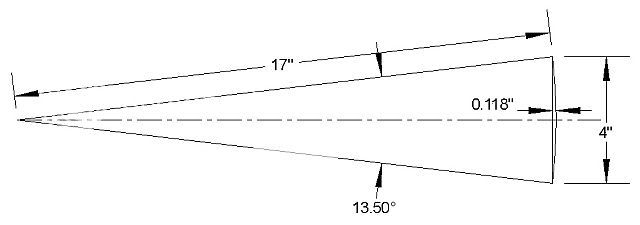Corley
New Member
Al,
You are totally loosing me when you talk about the lower locating arm being "variable length". It's a solid hunk of steel, the inner end has two pivots off the diff, the outer end has two pivots at the stub axle carrier. It travels in an arc as the wheel moves up and down, and the axle shafts travel in a parallel arc maintaining a verticle wheel. I just don't see any "variable length" parts here at all. If the lower locating arm and radious rod form an 'A' member, then yes, the front pivot on the radious rod must be in alignment with the two inner pivot points of the lower arm (blue line on drawing). Now if the radious rod is connected to something other than the outer end of the lower control arm, like for example the sub axle carrier, all bets are off. But I think in keeper's case the radious rod is connected to the lower control arms outer end, so it's a big 'A' and he should be good to go.
Youngster,
The weight of an XJ6 sedan is "heavy". Around 4250 lbs if I recall. About a 60 40 distribution, so the rear is looking at carrying about 1700-1800 lbs, empty. I don't think that is really relevant to this issue though.
Ted,
As mentioned before, Jag used a radious rod that was basically out of alignment, being that it went straight forward, but is was mounted in some really gooshy rubber mounts, it did little to carry the acceleration and braking forces until they were in the extreme. Many cars use a rubber mounting of all suspension parts to reduce road noise isolation more than anything else. Some even use double rubber isolation, but you and I can't afford many of those cars. HA! While you are correct about rubber making things harder to break, it's really not that simple. The sudden impact forces will be lessened, but the major ultimate force still gets through, so things like mounts, welds, etc., still get the ultimate force applied to them. They just don't get the hammer like pounding of smaller forces with rubber mounts. So, while I agree with you, I also must disagree with you. Fun, ain't it! I'm not knocking rubber at all, in fact I used to carry one in my wall... BIG Whoops... Sorry...
CB
You are totally loosing me when you talk about the lower locating arm being "variable length". It's a solid hunk of steel, the inner end has two pivots off the diff, the outer end has two pivots at the stub axle carrier. It travels in an arc as the wheel moves up and down, and the axle shafts travel in a parallel arc maintaining a verticle wheel. I just don't see any "variable length" parts here at all. If the lower locating arm and radious rod form an 'A' member, then yes, the front pivot on the radious rod must be in alignment with the two inner pivot points of the lower arm (blue line on drawing). Now if the radious rod is connected to something other than the outer end of the lower control arm, like for example the sub axle carrier, all bets are off. But I think in keeper's case the radious rod is connected to the lower control arms outer end, so it's a big 'A' and he should be good to go.
Youngster,
The weight of an XJ6 sedan is "heavy". Around 4250 lbs if I recall. About a 60 40 distribution, so the rear is looking at carrying about 1700-1800 lbs, empty. I don't think that is really relevant to this issue though.
Ted,
As mentioned before, Jag used a radious rod that was basically out of alignment, being that it went straight forward, but is was mounted in some really gooshy rubber mounts, it did little to carry the acceleration and braking forces until they were in the extreme. Many cars use a rubber mounting of all suspension parts to reduce road noise isolation more than anything else. Some even use double rubber isolation, but you and I can't afford many of those cars. HA! While you are correct about rubber making things harder to break, it's really not that simple. The sudden impact forces will be lessened, but the major ultimate force still gets through, so things like mounts, welds, etc., still get the ultimate force applied to them. They just don't get the hammer like pounding of smaller forces with rubber mounts. So, while I agree with you, I also must disagree with you. Fun, ain't it! I'm not knocking rubber at all, in fact I used to carry one in my wall... BIG Whoops... Sorry...
CB





